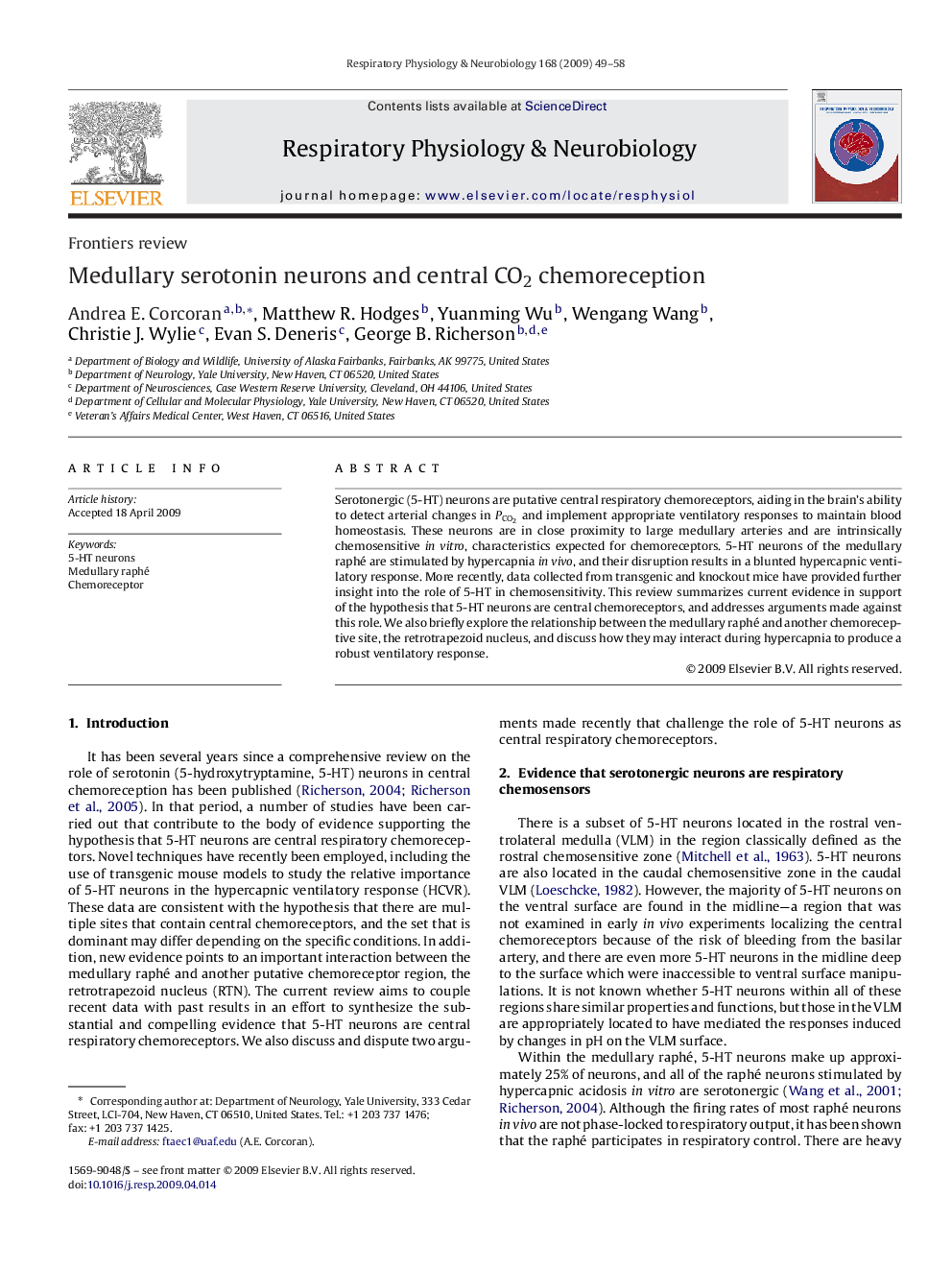| Article ID | Journal | Published Year | Pages | File Type |
|---|---|---|---|---|
| 2847764 | Respiratory Physiology & Neurobiology | 2009 | 10 Pages |
Serotonergic (5-HT) neurons are putative central respiratory chemoreceptors, aiding in the brain's ability to detect arterial changes in PCO2PCO2 and implement appropriate ventilatory responses to maintain blood homeostasis. These neurons are in close proximity to large medullary arteries and are intrinsically chemosensitive in vitro, characteristics expected for chemoreceptors. 5-HT neurons of the medullary raphé are stimulated by hypercapnia in vivo, and their disruption results in a blunted hypercapnic ventilatory response. More recently, data collected from transgenic and knockout mice have provided further insight into the role of 5-HT in chemosensitivity. This review summarizes current evidence in support of the hypothesis that 5-HT neurons are central chemoreceptors, and addresses arguments made against this role. We also briefly explore the relationship between the medullary raphé and another chemoreceptive site, the retrotrapezoid nucleus, and discuss how they may interact during hypercapnia to produce a robust ventilatory response.
